
The
killing of mouthbrooding
Silver arowana to remove their offspring and export them for the global aquarium trade may be placing the species
under threat according to a new study. The Silver arowana,
Osteoglossum bicirrhosum, is a paternal mouthbrooding osteoglossid fish that reaches a length of over 1m/39" and is one of South America's most popular food fish species. It is also of commercial importance to the aquarium industry and in 2001 the export of one million juvenile Silver arowana contributed around $560,000 to the rural poor of Peru, according to official records. However, the actual number of arowana exported could be as much as 20% higher.
According to a new study by Marie-Annick Moreau and Oliver Coomes of McGill University, which has just been published in the journal Oryx, the export of Silver arowanas in Peru has been on the rise for several years and the killing of reproductive males could threaten the sustainability of the fishery. Moreau and Coomes claim that the species' life-history characteristics, including the small number of offspring it produces, make it unsuited to the heavy exploitation it is facing from both the aquarium trade and the food fish industry. "Two osteoglossid species with similar biological traits are already listed on CITES to protect wild populations from collection for the aquarium and food fish trades", the authors wrote. "No similar international trade restrictions are in place for the Silver arowana, and little information is available on the status of wild populations in Peru or elsewhere in South America. Arapaima gigas is categorised as Data Deficient on the IUCN Redlist, but O. bicirrhosum has yet to be evaluated."
More research neededThe authors emphasise that determining whether the aquarium trade poses a threat to the species is challenging: "Research to determine whether stocks are declining, as seems likely given the current levels of offtake, would need to be conducted over several years and in different fishing areas, and would need to determine whether exploitation for the aquarium trade is the primary cause of any decline or whether other factors (eg. direct fishing for food, bycatch capture by other fisheries and habitat degradation/destruction) also act singly or jointly to reduce fishing yields."Moreau and Coombes suggest that guidance in the sustainable use of the Silver arowana fishery is needed, rather than an outright ban on the sale of the species, as there is an absence of supporting data on the conservation status of the species. "To ban the trade outright would deny an important source of income to the rural poor, destabilise an export economy that is estimated to directly employ up to 14,000 people in Peru and that provides important foreign earnings to Amazonian countries, and would probably shift exploitation to other vulnerable Amazonian aquarium fish species, such as river stingrays."
Silver arowanaCommon name: Silver arowana, Arahuana, Aruana, Arrowana, Arawana
Scientific name: Osteoglossum bicirrhosum (Cuvier, 1829)
Size: Adults can reach up to 1m/39" in large aquariums.
Diet: A surface dwelling predator that feeds on fish, insects, spiders, birds and bats.
Reproduction: A paternal mouthbrooder. The fish spawns during the dry season when water levels are low. The male holds a small clutch of large eggs in a brood pouch in his mouth and broods the larval fish for a further three weeks. At a size of 3-4cm the fish are released to allow them to feed but return to the male's mouth if danger threatens. The fish leave the mouth at an age of 4-6 weeks when they measure around 10cm/4" in length. The species reaches sexual maturity after two years.
Availability: Many Silver arowana are wild caught and are imported mainly from Brazil and Peru. However, the species is also produced in captivity.
Article by Matt Clarke
Photo by Dusko Bojic.
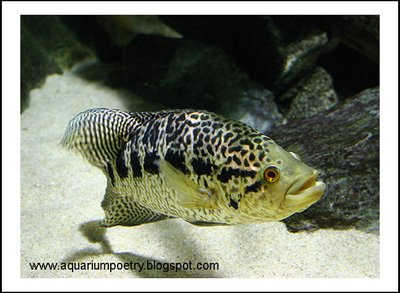 Cichlasoma managuense also known as Managua Cichlid.
Cichlasoma managuense also known as Managua Cichlid.


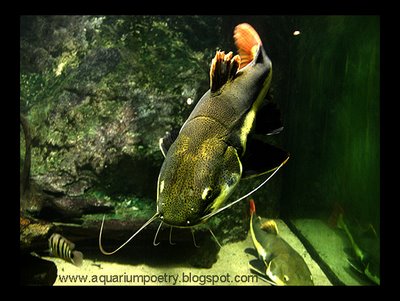

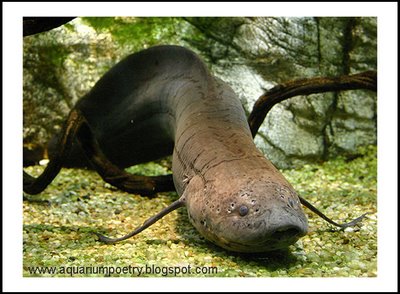 Photos by Dusko Bojic
Photos by Dusko Bojic




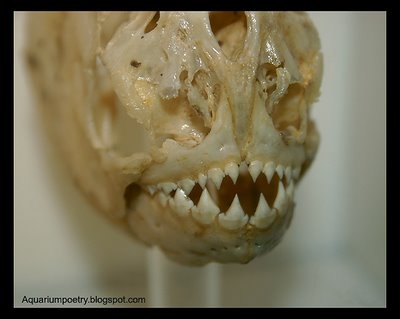
 Piranha originate from Argentina, Bolivia, Brazil, Colombia, Ecuador, Guyana, Paraguay, Peru, Uruguay and Venezuela.
Piranha originate from Argentina, Bolivia, Brazil, Colombia, Ecuador, Guyana, Paraguay, Peru, Uruguay and Venezuela. Photos by Dusko Bojic.
Photos by Dusko Bojic.
 Photos by Dusko Bojic.
Photos by Dusko Bojic.

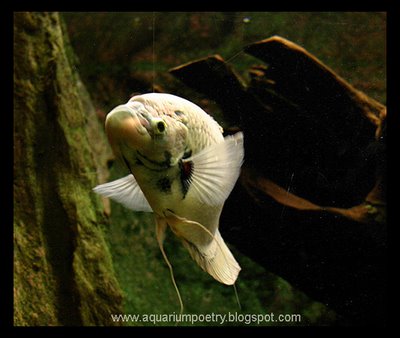 Photos by Dusko Bojic.
Photos by Dusko Bojic.
